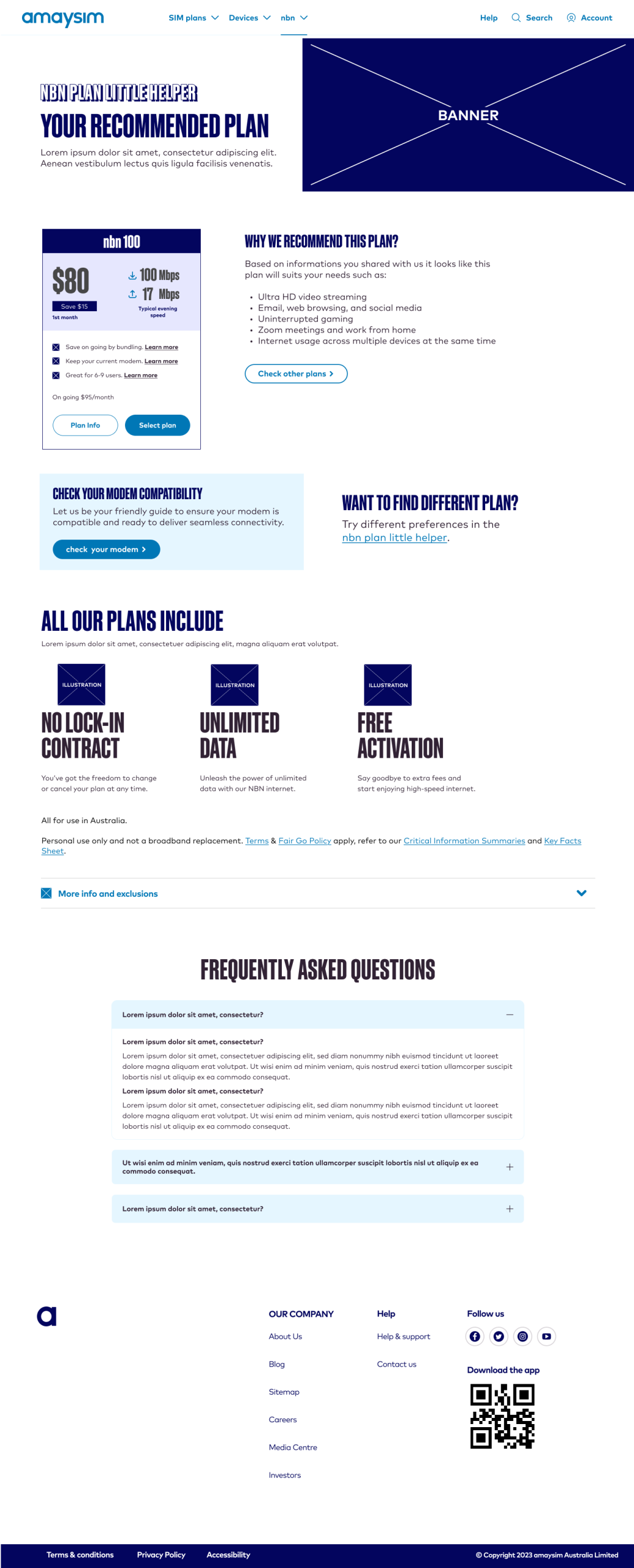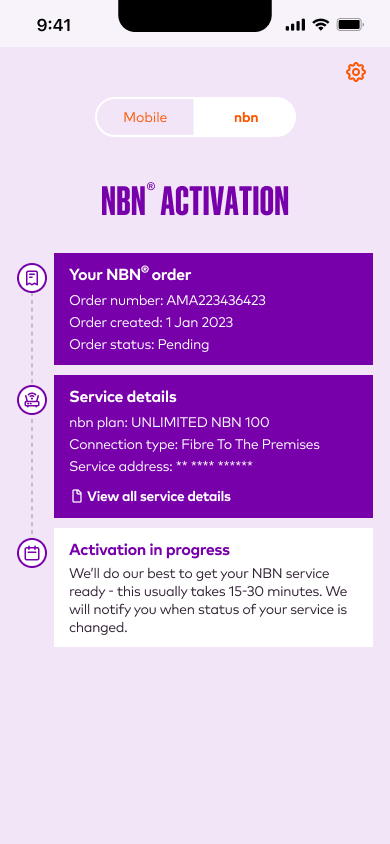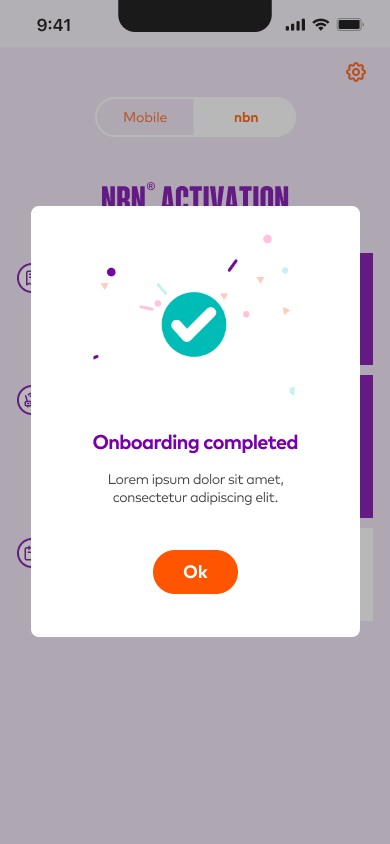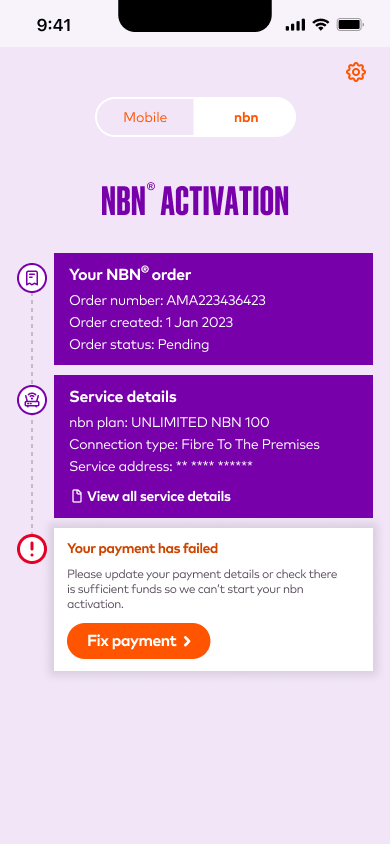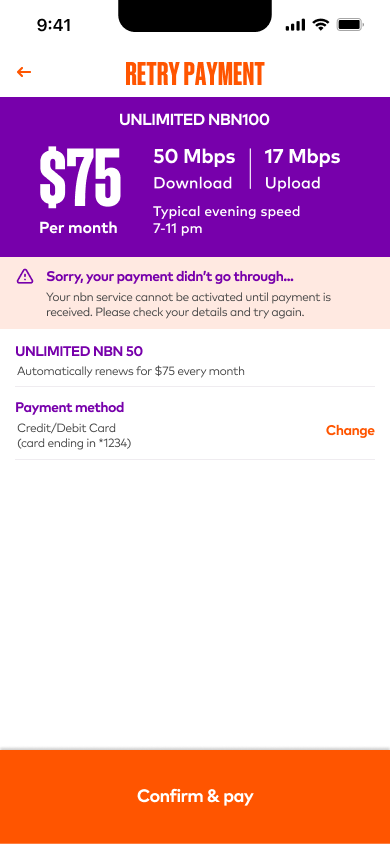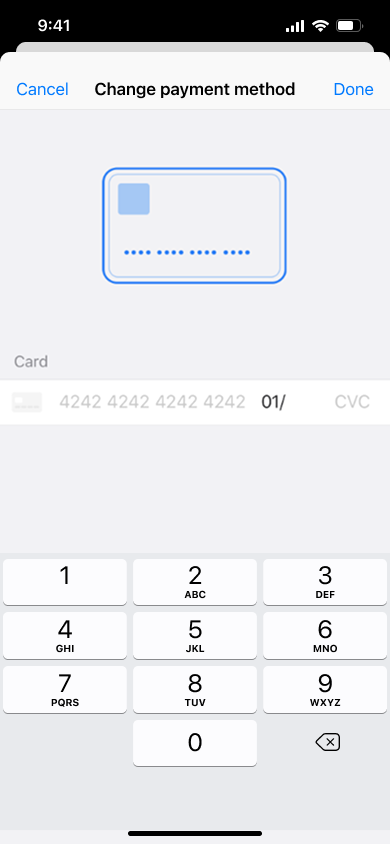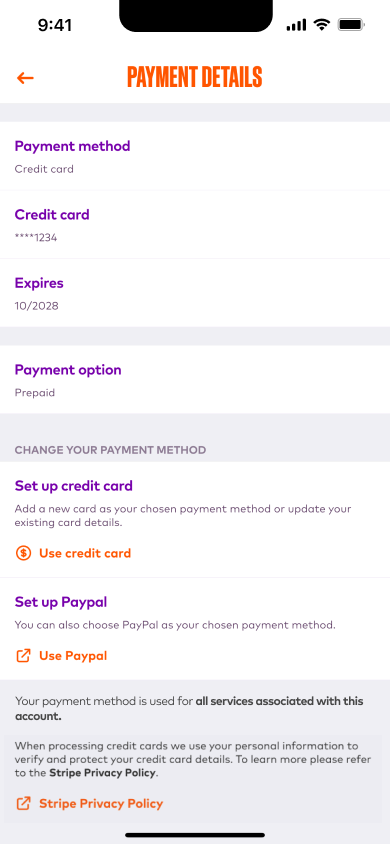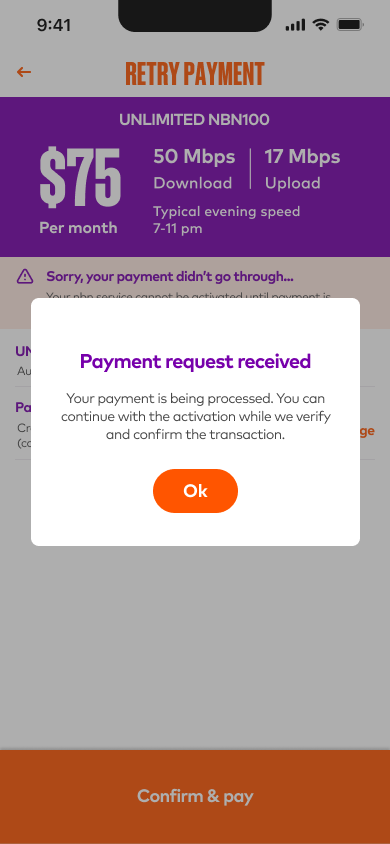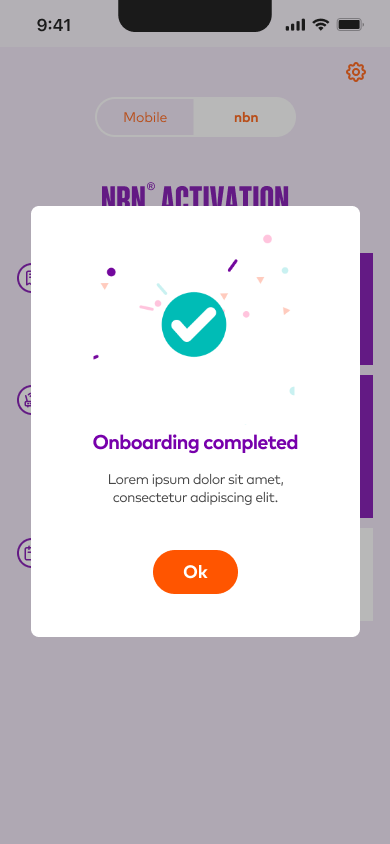
NBN® Home Internet
Project Title: “amaysim nbn® Home Internet”
Role: Lead UX/UI Product Designer
Timeline: Dec 2022 – Sept 2024
What we achieved
Before diving into the full case study, here’s a quick snapshot of what we achieved. The launch of nbn Home Internetmarked a major milestone for amaysim—the largest product launch in the company’s history. This ambitious project delivered strong results across both customer satisfaction and business performance, setting a new benchmark for digital experience within the organisation.
200%
growth in customer acquisition - outperforming our initial forecasts and far exceeding expectations.
~25k
we have received around 25k EOI in two weeks! The prediction was 5k.
2 wks
for this huge initiative, we absorbed delay to only 2 weeks - Optus as our parent company had around 2 months delay
Project Overview
As part of its strategic expansion, amaysim introduced nbn® home internet to complement its mobile offering and strengthen customer retention. In a highly saturated and competitive nbn market, where larger incumbents like Telstra and TPG are losing ground to agile Tier 2 providers, amaysim saw a timely opportunity to differentiate and gain market share.
To succeed, we designed a product experience anchored in simplicity and value, aligning with five key principles:
- A clear and intuitive Good–Better–Best plan structure
- Focus on acquiring high-speed users
- Loyalty rewards for existing customers (without hard bundling)
- Consistent alignment with brand and market position
- Measurable financial contribution to the business
This case study outlines how we brought this offer to life through customer-centric UX design, ensuring the experience was clear, compelling, and true to the amaysim brand.
As part of its strategic expansion, amaysim introduced nbn® home internet to complement its mobile offering and strengthen customer retention.
Objectives:
My Role
As the sole UX/UI Product Designer on this project, I led the end-to-end design process—from discovery to final delivery. Due to capacity constraints, I took full ownership while collaborating closely with key stakeholders such as Product Owner, different DigiProd managers, marketing team, BAs and engineering teams to bring the nbn experience to life.
My Role
UX Research
UX Design
UI Design
UX Strategy
Stakeholders management
Process
Problem/Product definition
Analysing & Planning
Research
Designing & Validating
Iterate
Tools
Figma
Miro/FigJam
Confluence
Jira
Askable
Usabilla
Key market insights
92%
of Aussies have broadband/NBN at home.
60%
are looking to switch for more reliable and affordable internet options.
54%
switcher are drive by better offers or by price hikes from thier current providers.
46%
of customers hold Telstra and Optus. Another 46% all other providers combined.
Households 'types' and other insights
Everyone wants a reliable, no fuss experience. This is a baseline requirement.
Identify as a small, medium or big broadband users: This drives the speed preference. Over time many identify that their speed need change (more household members, more connected devices) so are keen on a cost effective upgrade of speed and devices.
Preferences centre on saving money (value) or getting the best experience (congestion avoidance): Technology engagement isn’t necessarily a driver of speed preference, rather it’s the value of an ‘easy life.’
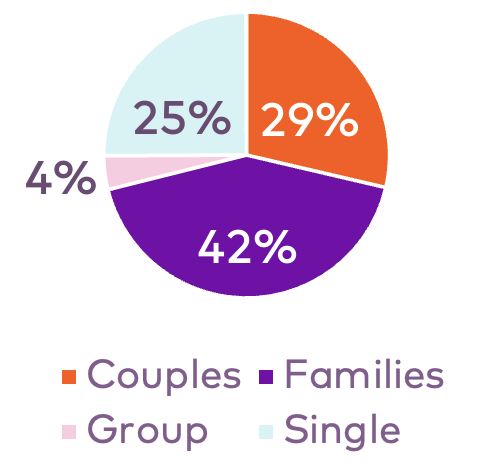
The distinct needs of different households in the circle of life…
Singles/ Couples - typically small and medium users (or really big!) - Speed preference is a function of technology engagement/use, income, education, age. ‘Gamers’ and ‘Seniors; the most distinct segments, with high/low technology knowledge
Families - typically medium and large users - Broadband speed need is a function of number and age of people in the household, technology engagement, desire to avoid congestion (versus saving money). Kids drive technology upgrades (education, entertainment, gaming).
Source: https://aifs.gov.au/research/facts-and-figures/population-and-households and updated by 2021 Census
9.4 million
number of households with 2.6 people per house
21 device
estimated number of device connected to the internet, growing to 34 by 2025
UX/UI Design Strategy
Our UX strategy was grounded in a customer-centric approach focused on simplicity, clarity, and self-service. To ensure a seamless end-to-end experience, we mapped the journey across the full customer lifecycle and structured the project into four key phases:
- Acquisition – Designing a high-converting, value-driven sales experience to attract new customers and clearly communicate plan benefits.
- Onboarding & Activation – Guiding customers through signup, modem delivery, and service activation with clear, step-by-step instructions.
- Manage & Use – Empowering users with intuitive self-service tools for managing their nbn service via the app and account portal.
- Service Assurance – Creating transparent, supportive flows to handle issues like outages, troubleshooting, or transitioning from copper to fibre.
Throughout each phase, we applied UX principles, rapid prototyping, and iterative validation with internal stakeholders and customer feedback. The goal was to build a cohesive, branded experience that felt effortless at every touchpoint.
Key pillars of our UX/UI strategy included:
- Product Simplicity
Structure the offer in a Good–Better–Best format to reduce cognitive load and support faster decision-making. - Value-Led Communication
Clearly articulate benefits, pricing, and speed tiers to position amaysim as a trustworthy, high-value alternative. - Seamless Self-Service
Design intuitive digital journeys that empower users to complete tasks independently, from purchase to troubleshooting. - Mobile-First Design
Prioritise mobile experience across acquisition and account management, reflecting how customers engage with the brand. - Consistency & Brand Alignment
Leverage existing design systems and visual patterns to ensure brand continuity across the app, web, and communications.
This strategy shaped every UX and UI decision across the four project phases, from acquisition to service assurance, ensuring a unified, user-centred experience that supports long-term growth.
Research & Discovery
To ground design decisions in real customer needs and market context, I began with a comprehensive research phase. I conducted competitive analysis to identify gaps and opportunities in the nbn landscape, followed by user interviews to uncover key pain points and expectations. Insights from this research informed the creation of personas, customer journeys, and user flows that mapped the full lifecycle—from acquisition to troubleshooting. I also developed user diagrams and user stories to align cross-functional teams around customer goals, ensuring the experience was both intuitive and aligned with business outcomes.
- Mapping acquisition flows to evaluate plan presentation, pricing transparency, and CTA clarity
- Assessing onboarding and activation journeys to understand effort required for setup and service switch
- Reviewing post-purchase experiences, including account management, support access, and self-service capabilities
- Auditing UI design for consistency, clarity, and accessibility across mobile and web platforms
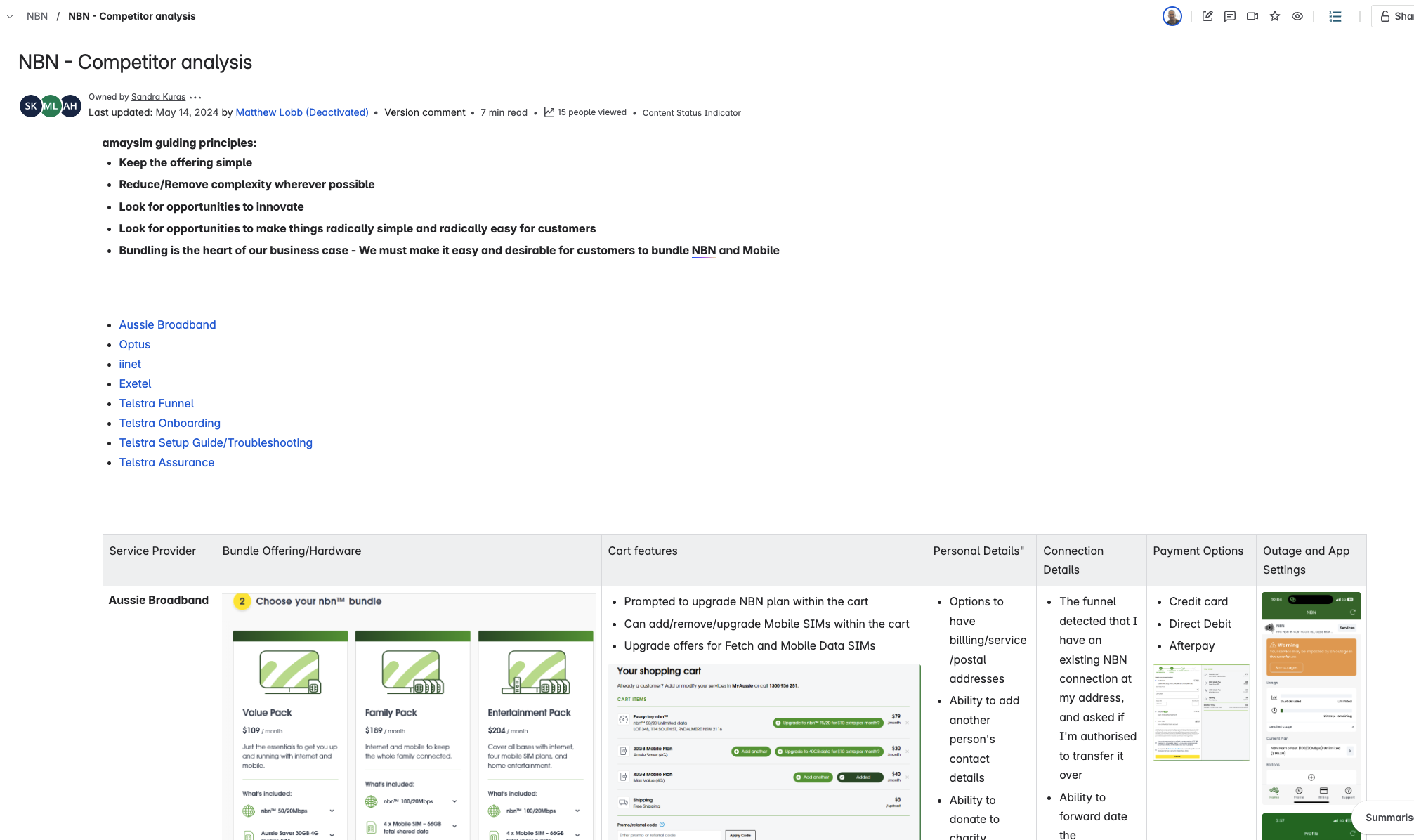
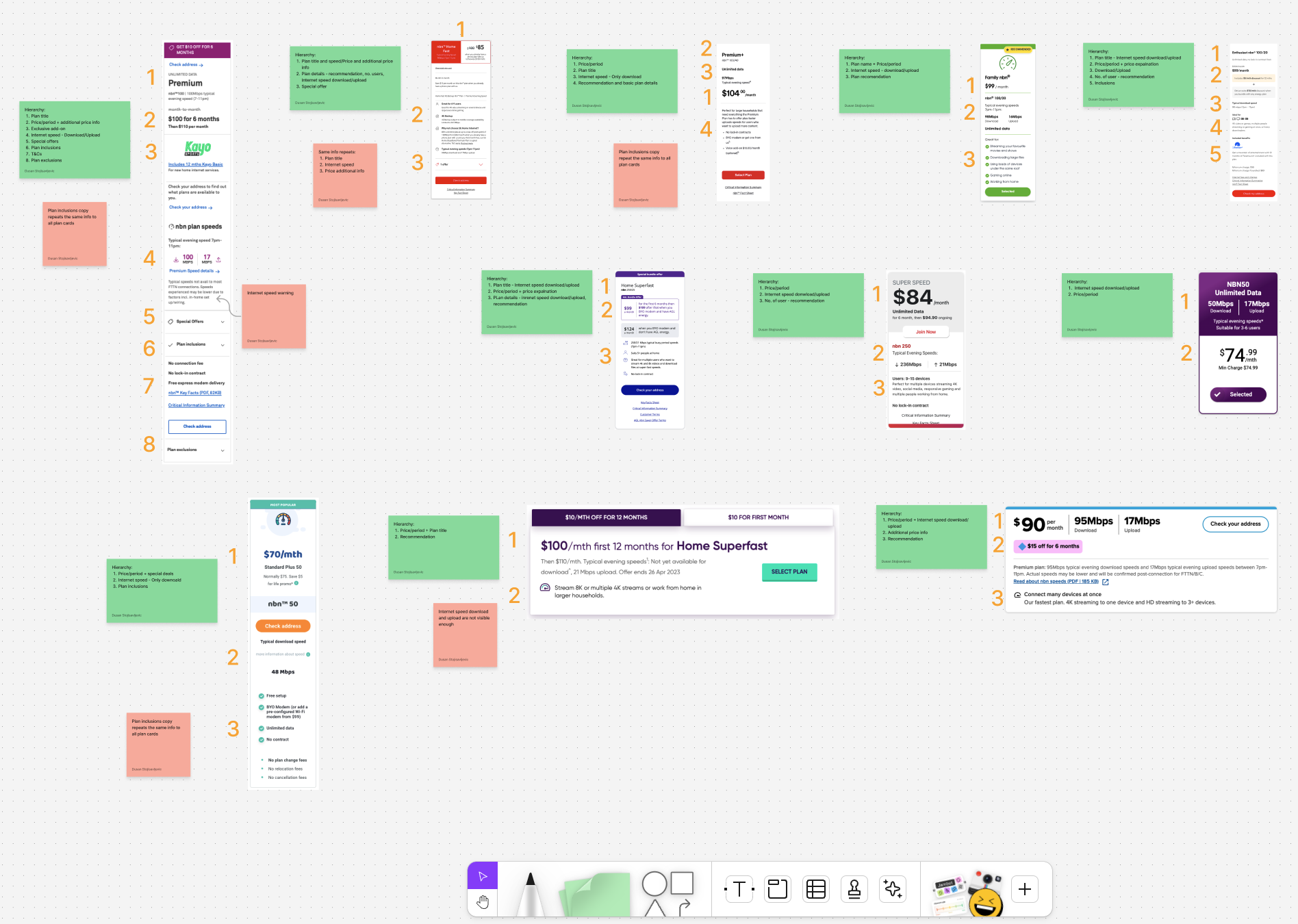
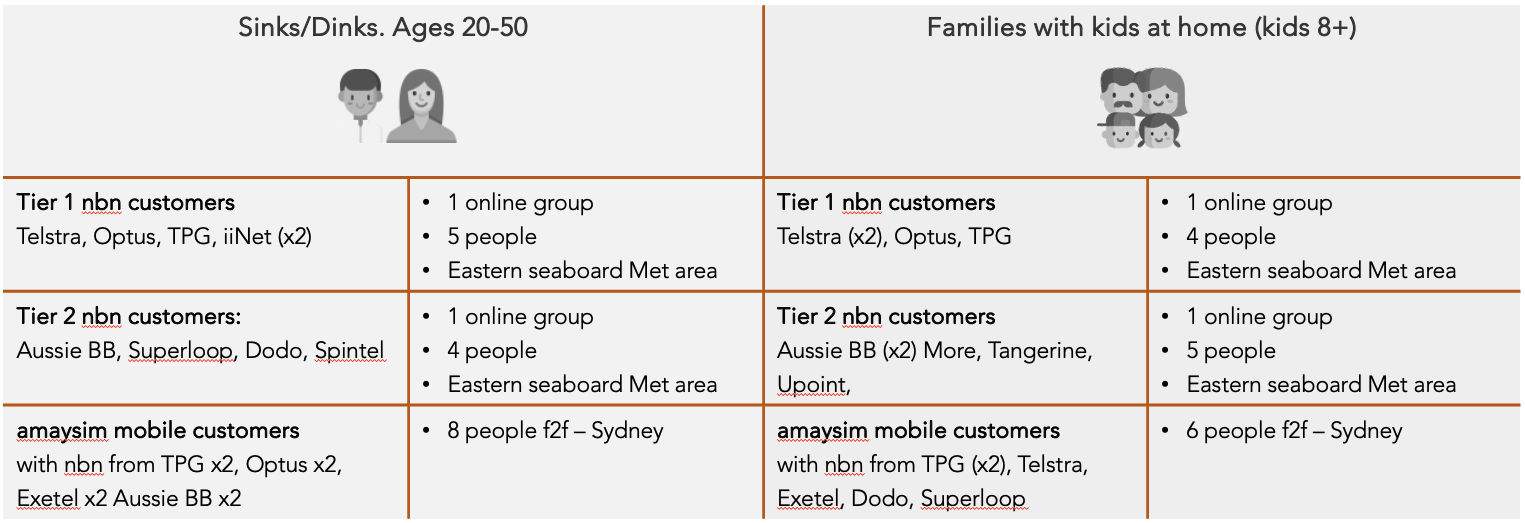
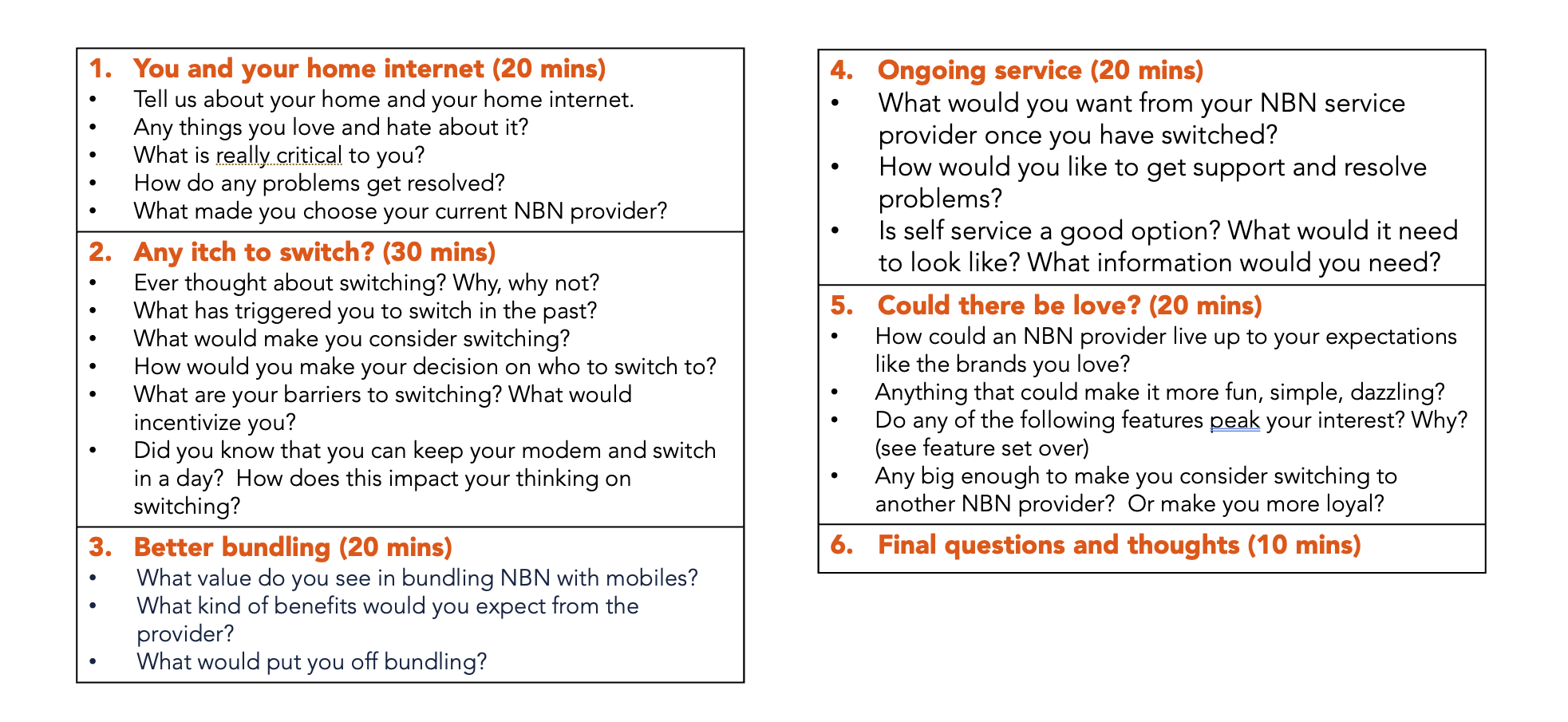
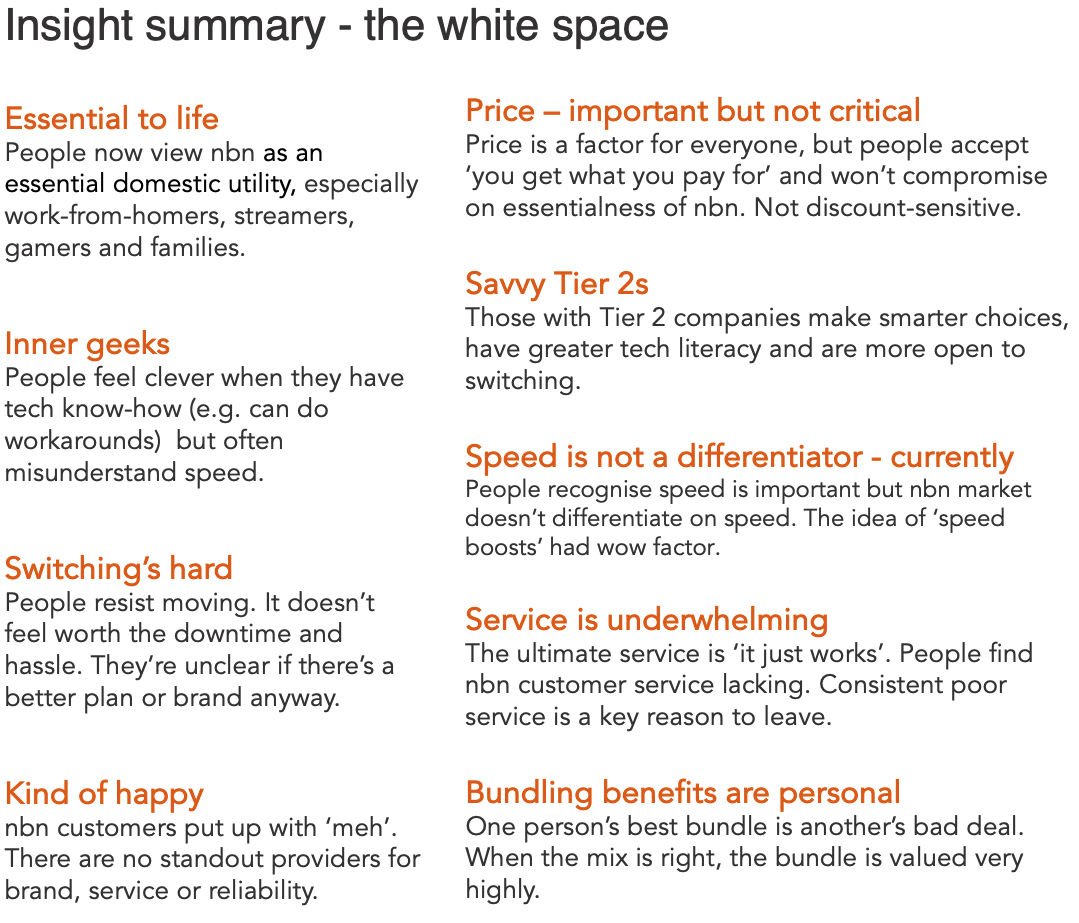
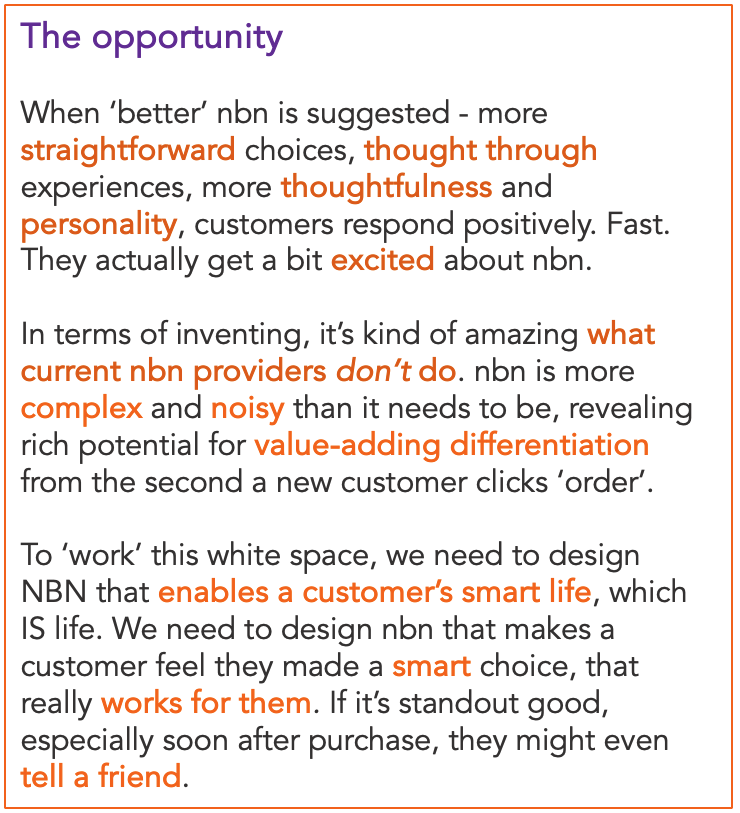
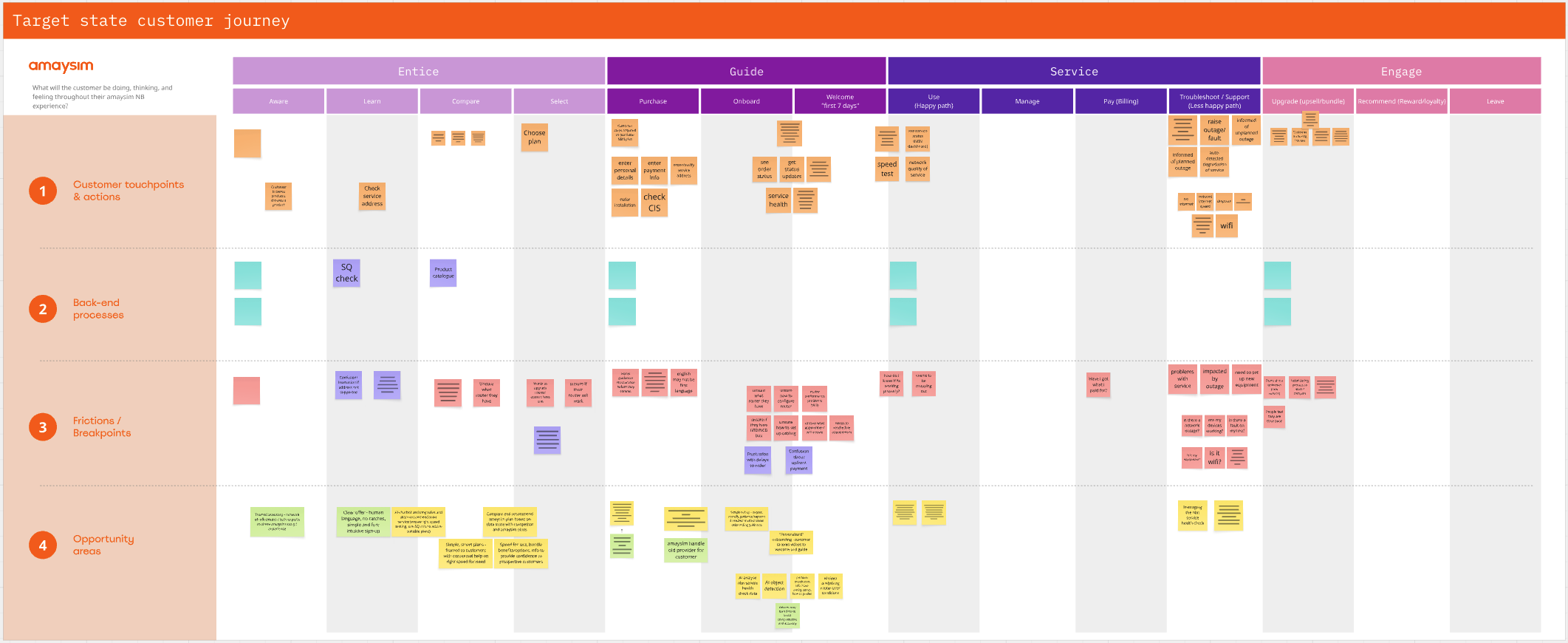
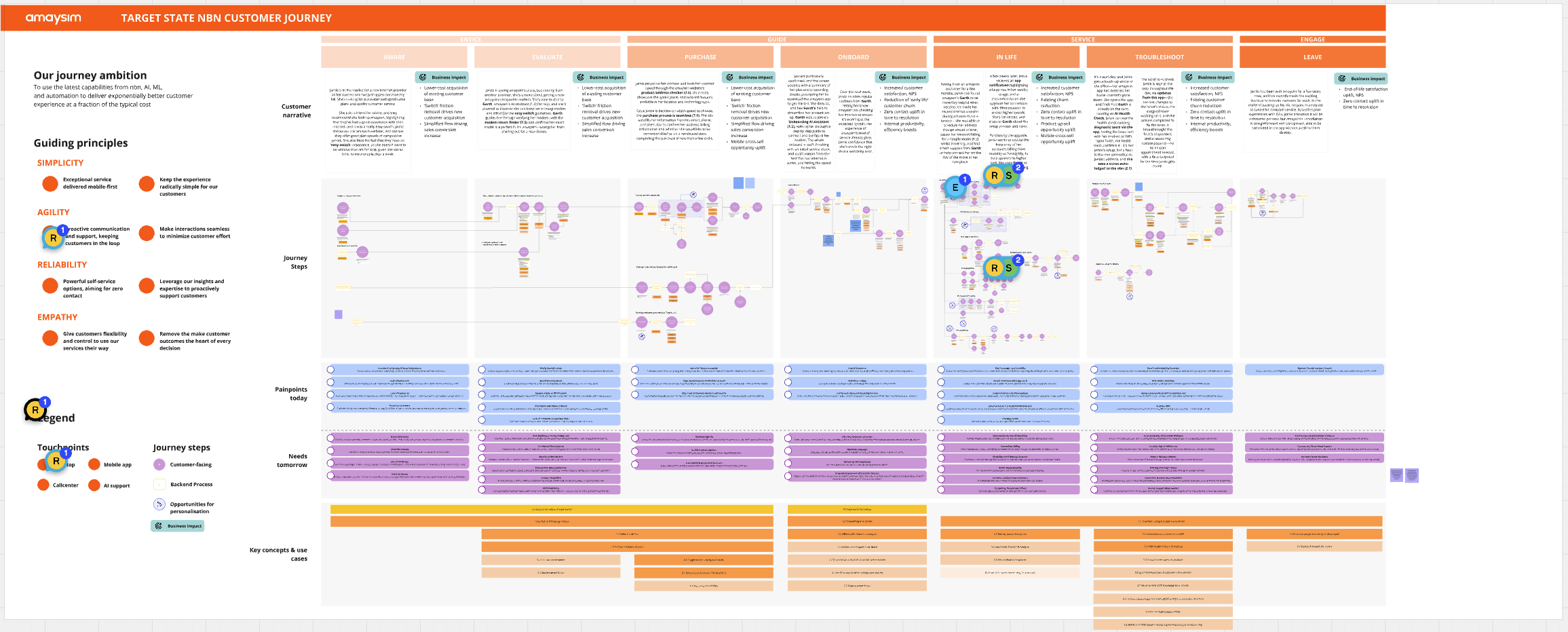

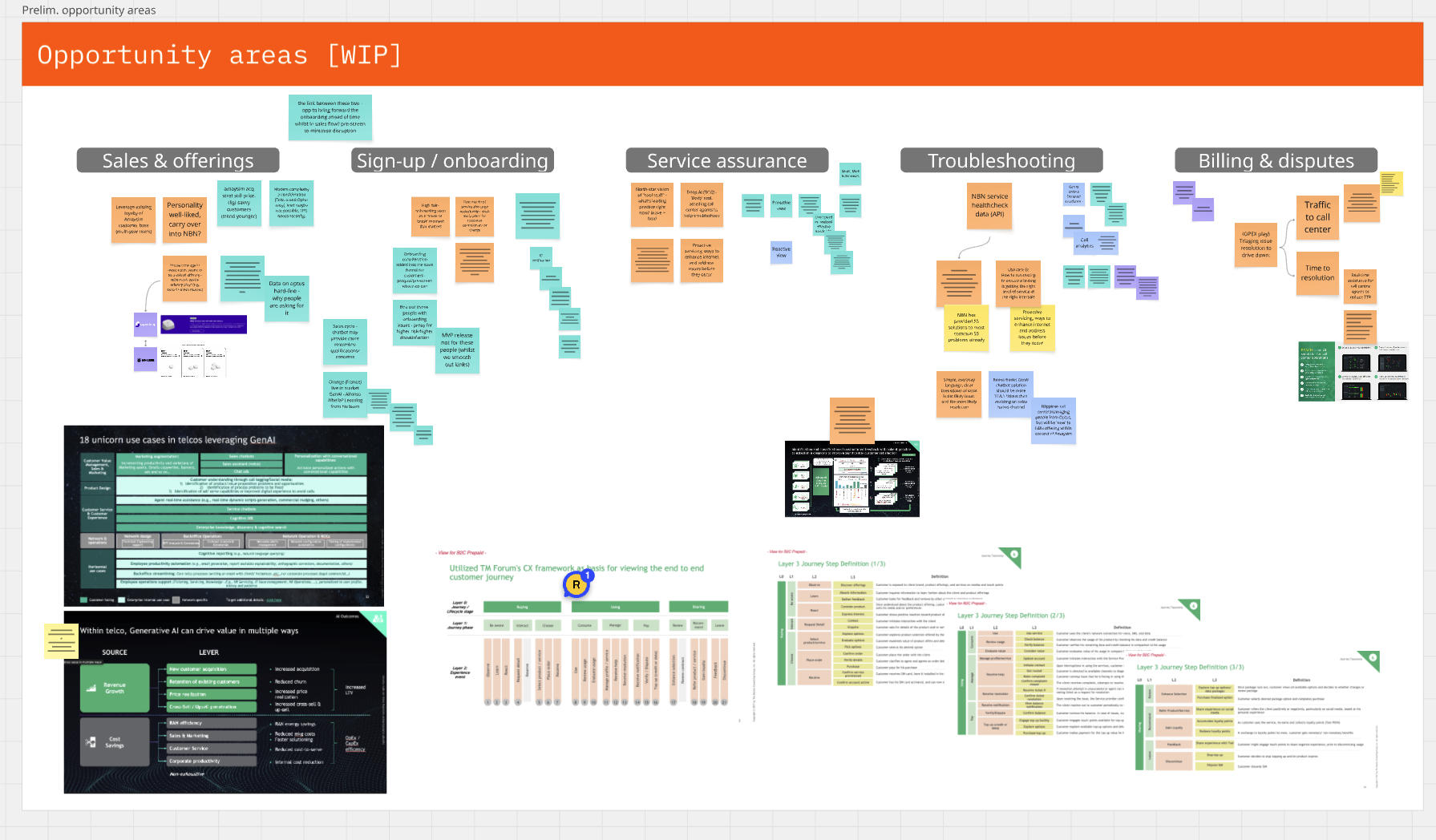
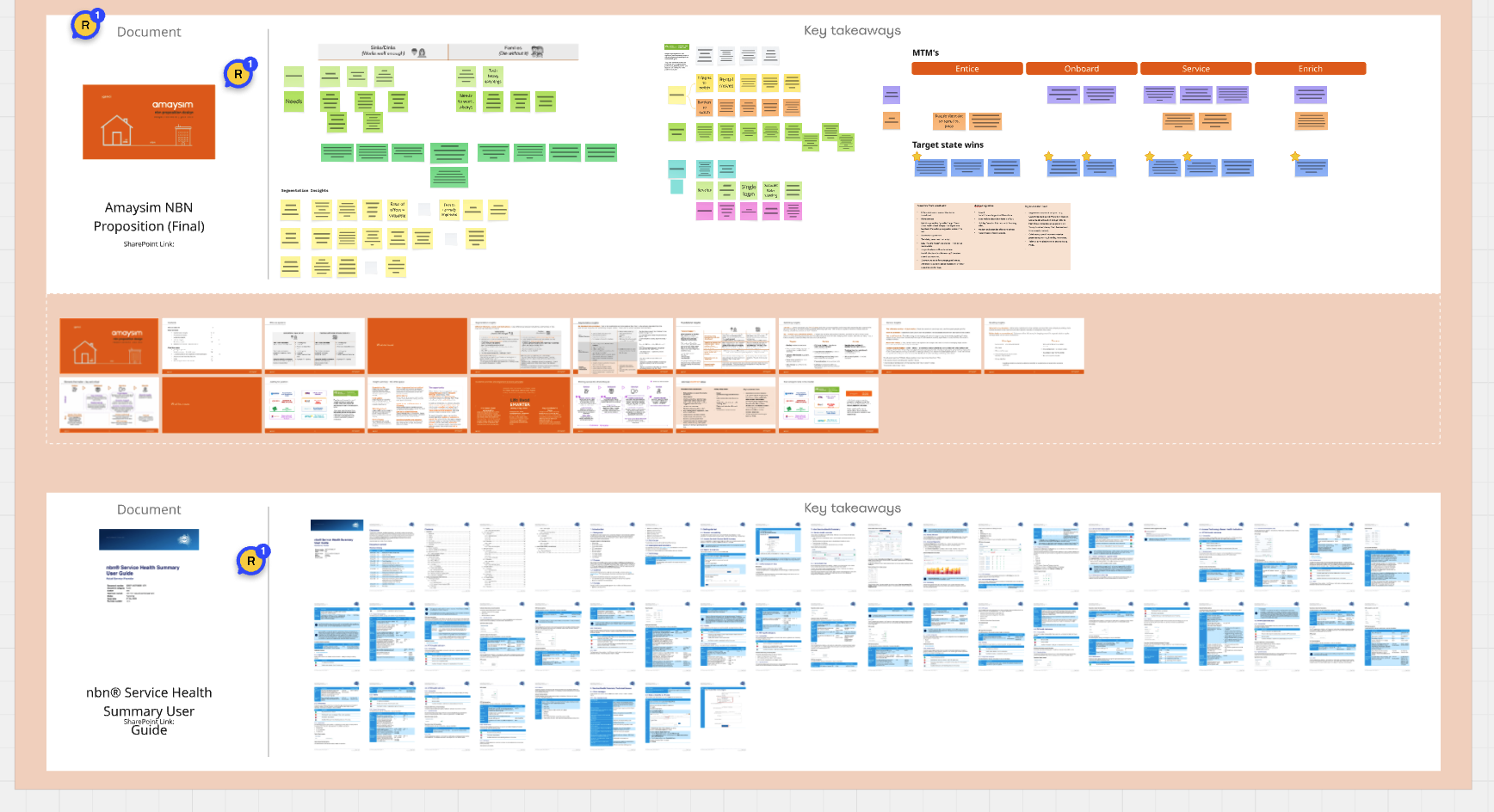
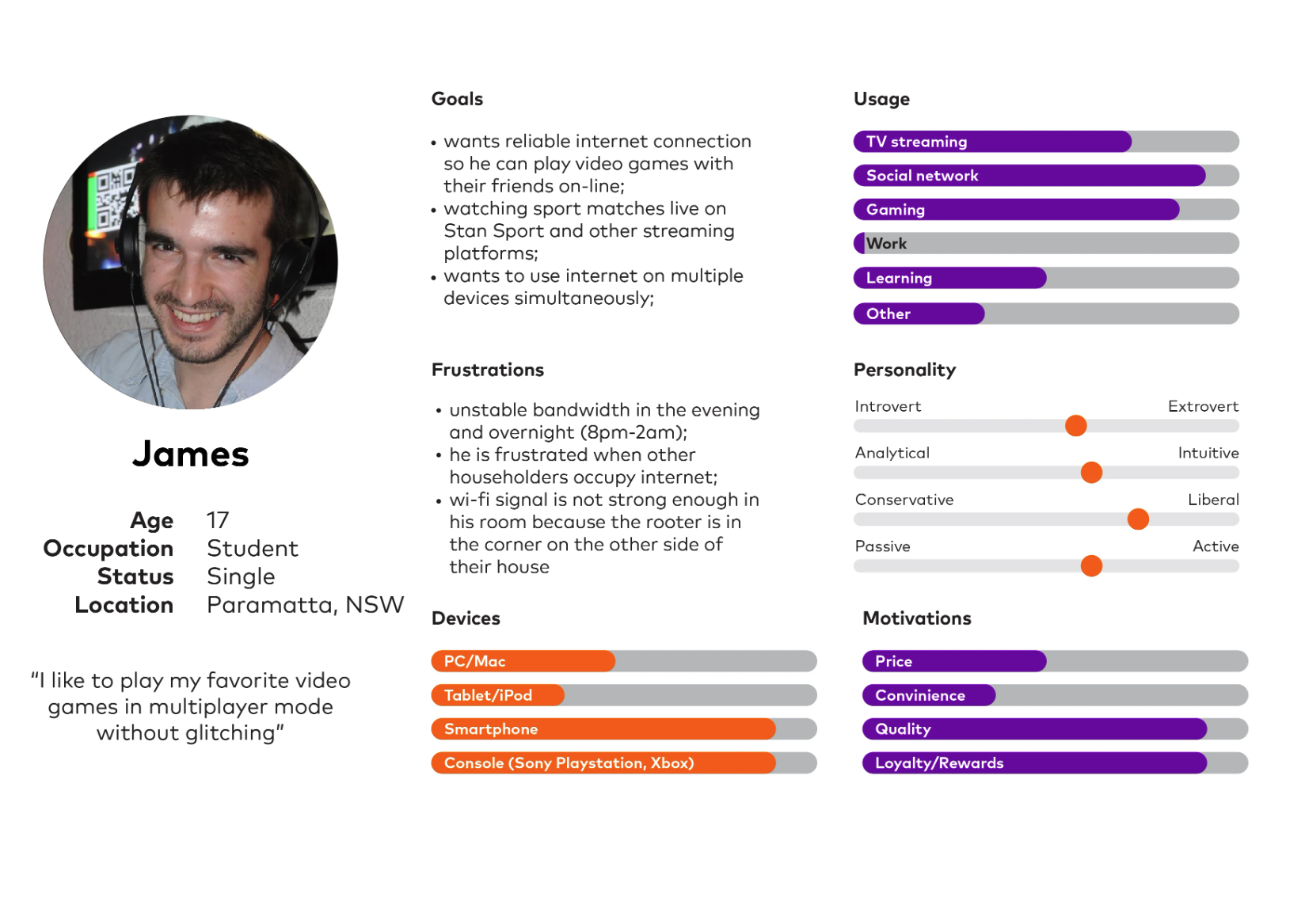
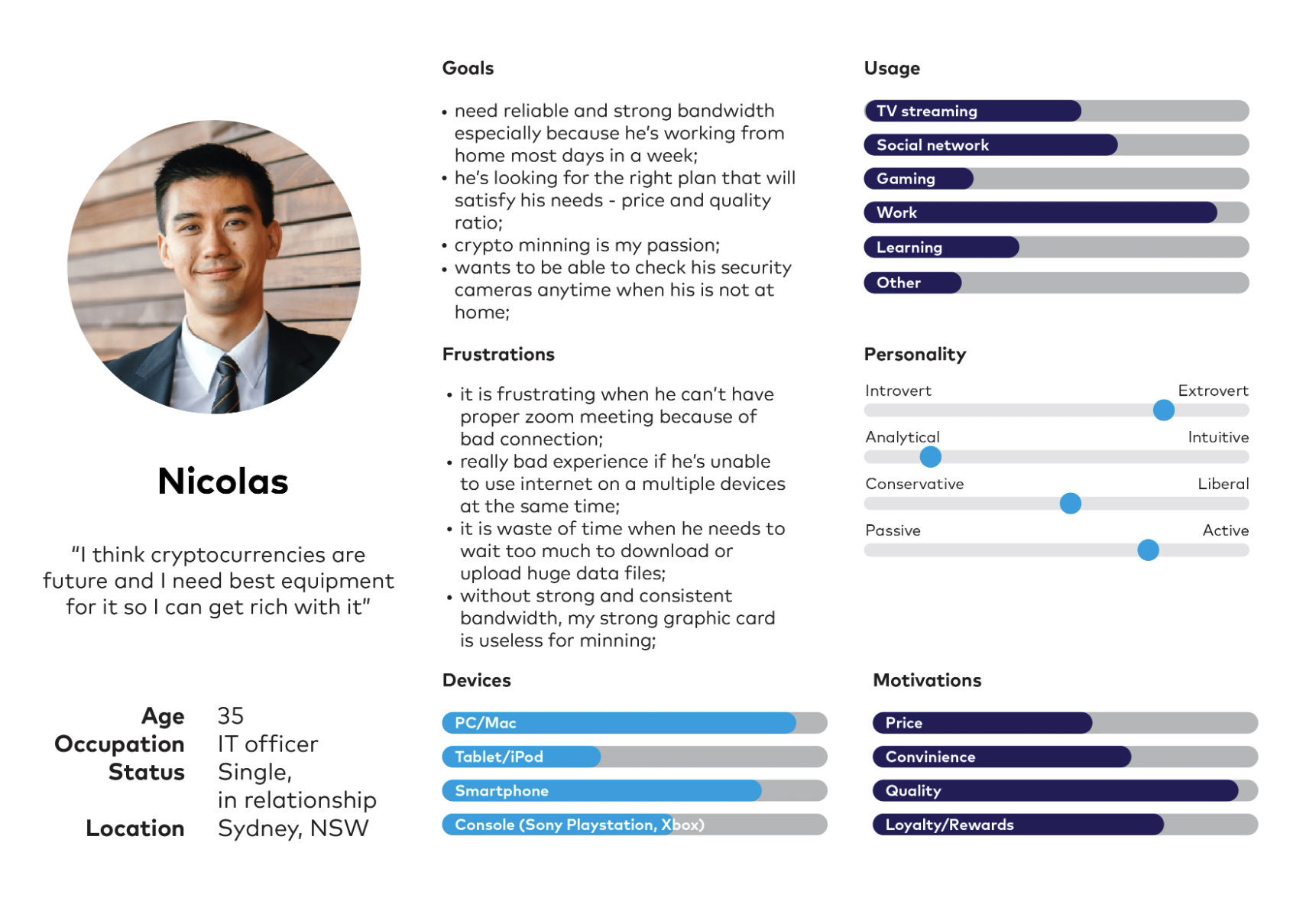
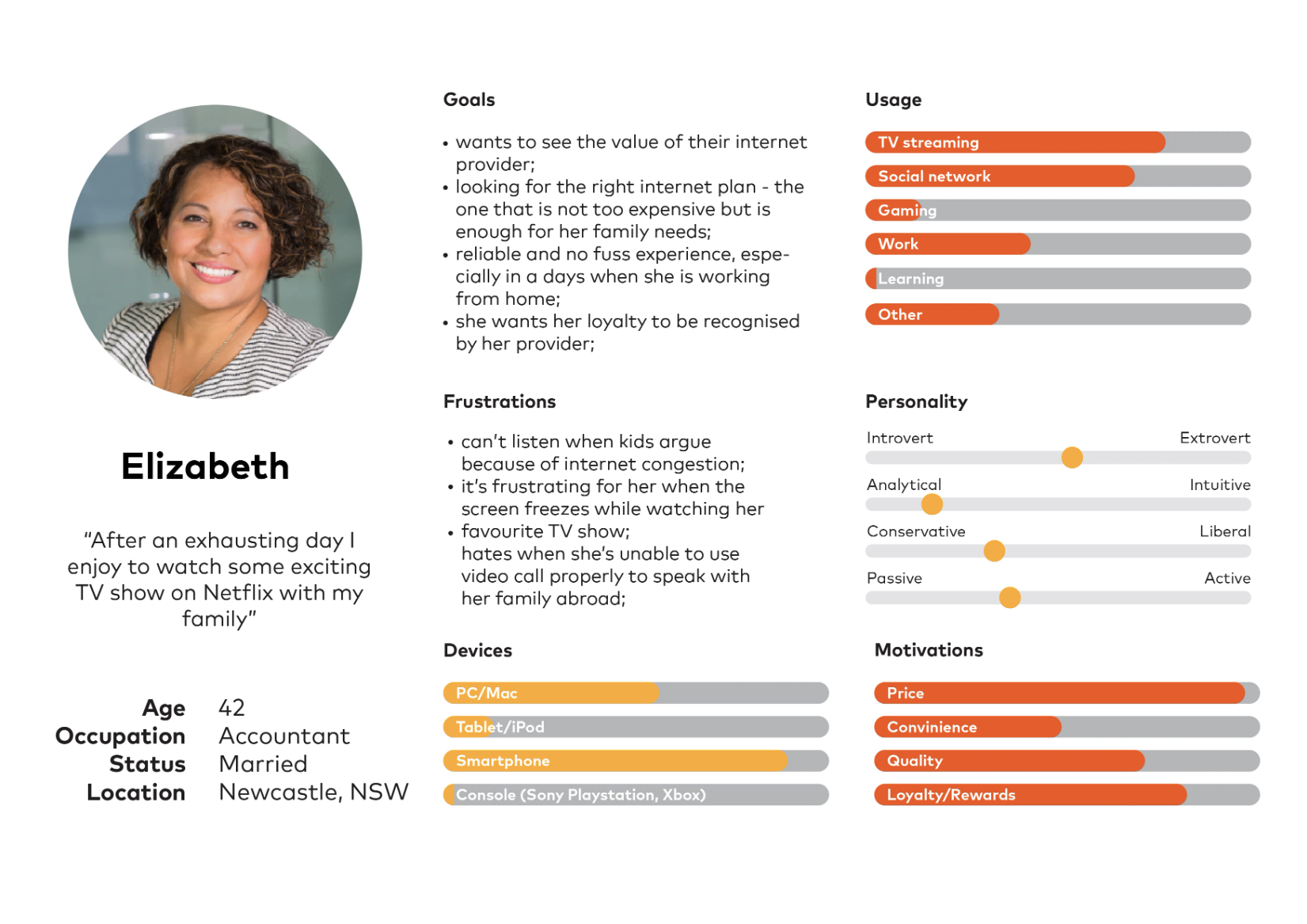
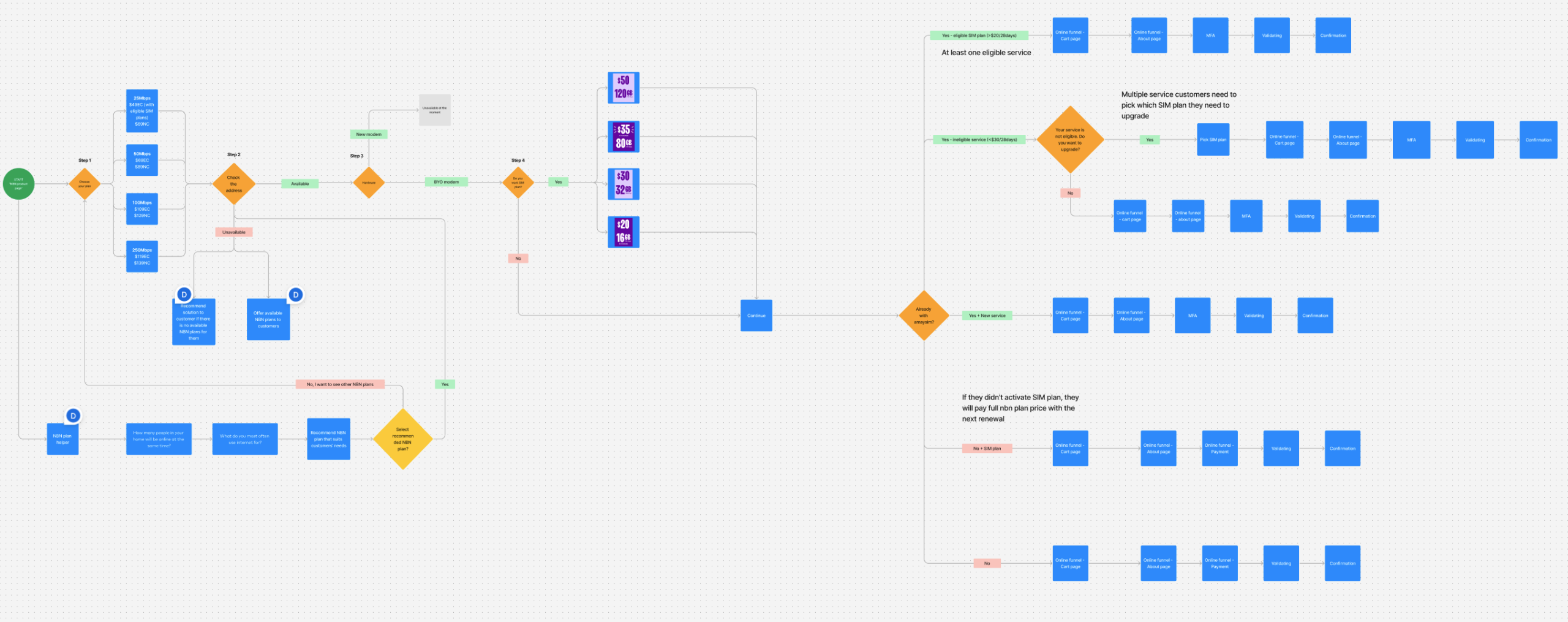
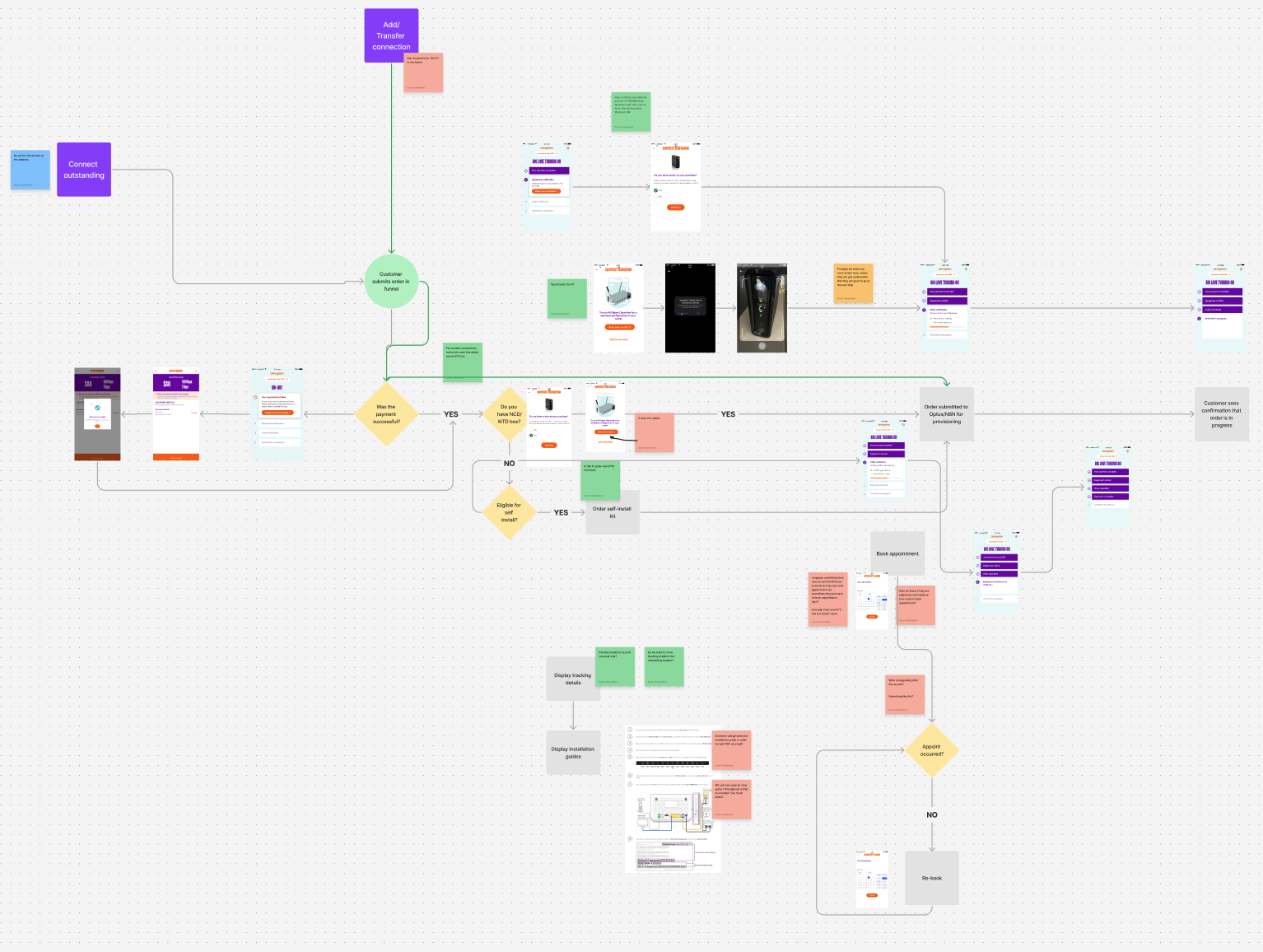
Ideation
During the ideation stage, I translated research insights into actionable concepts through collaborative workshops and sketching sessions. Using tools like Crazy 8s, whiteboarding, and wireframe exploration, we rapidly generated ideas to solve key user pain points identified in earlier phases. This process helped us evaluate multiple solutions, align with stakeholders, and define the foundation for low-fidelity prototypes that addressed both user needs and business goals.
I explored multiple acquisition flow concepts to create the most intuitive and conversion-focused experience. The journey involved two key steps: checking address availability (Service Qualification) and selecting a plan. We tested variations where plan selection came first, followed by SQ, to assess which flow felt more natural to users. Additionally, we experimented with different layout structures and content hierarchies on the acquisition page to optimise clarity and engagement.
All concepts were reviewed and discussed with key stakeholders to ensure alignment with business goals, technical feasibility, and brand positioning.
Before-after website NBN page
Customers could purchase nbn through both the amaysim website and the mobile app, providing flexibility and accessibility during the acquisition phase. The high-fidelity web designs for the acquisition journey were created by our Brand Design Team, who oversee the website and lead on brand and marketing execution. Their work was guided by the UX requirements and journey flows defined during the discovery phase. In parallel, I was responsible for designing the high-fidelity UI for the app, ensuring the mobile experience was seamless, intuitive, and aligned with our product goals.
We collaborated closely to ensure consistency across both platforms in layout, messaging, and visual language—delivering a unified experience regardless of the customer’s entry point.
Beyond acquisition, the rest of the nbn journey—including onboarding and activation, managing the service, and service assurance—takes place exclusively within the mobile app, making it the central channel for post-purchase engagement and support.
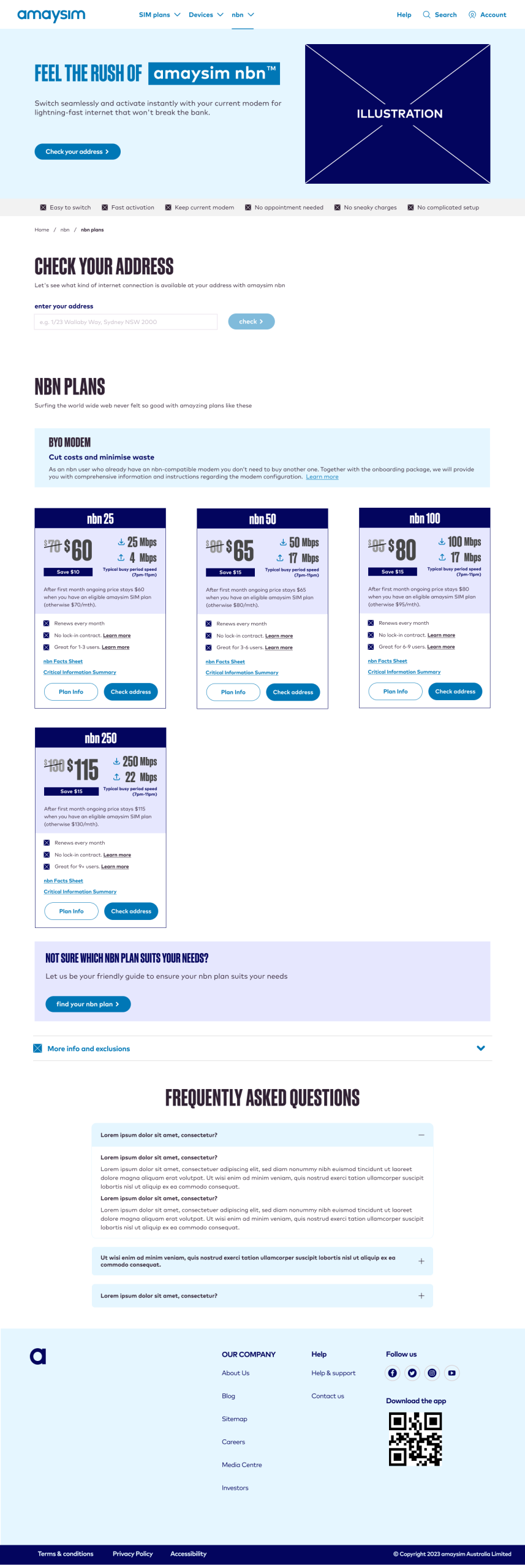
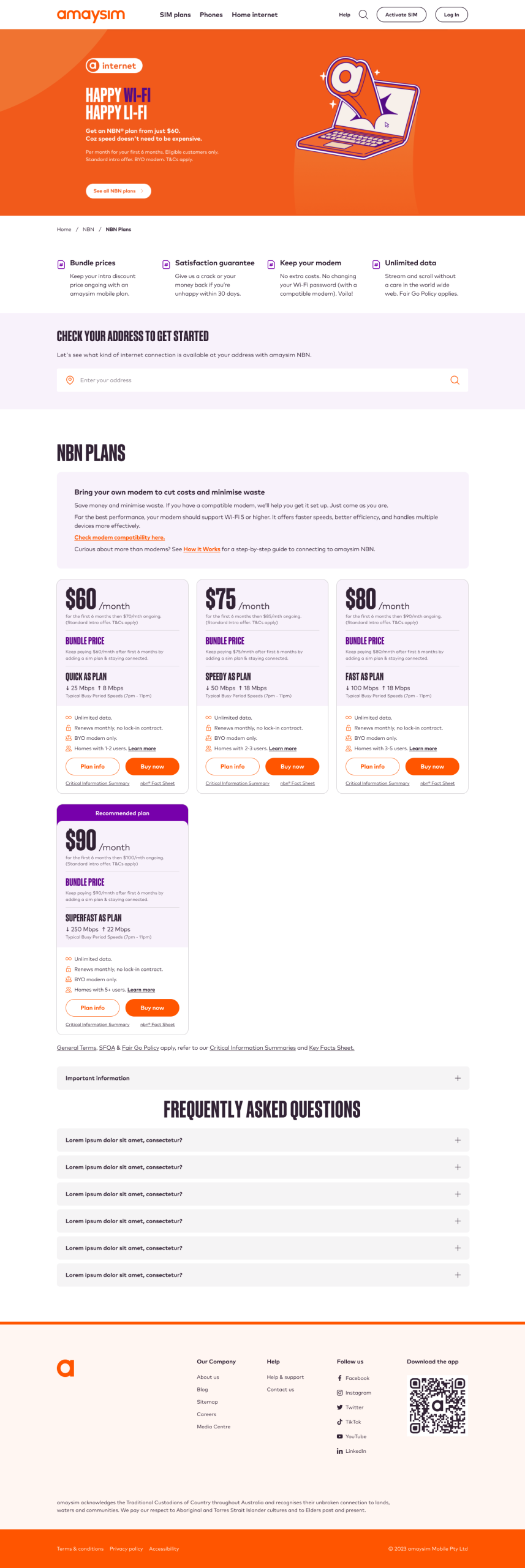
Prototyping
All high-fidelity designs were created in Figma, following best practices for scalable, maintainable UI. As part of the process, I designed a set of complex, reusable components with nested instances, variant properties, and interactive states to support multiple use cases across the nbn experience. I also implemented variables (for spacing, colours, and content) and design tokens to improve consistency and adaptability across light/dark modes and responsive layouts. These components were integrated into our existing amaysim design system, which I contributed to by updating existing assets and adding new variables, tokens, and patterns tailored specifically for the nbn journey. This approach ensured speed, consistency, and flexibility across the entire product experience.
Acquisition
Scenario: In-app purchase journey of a new customer, happy path
When a new customer opens the amaysim app for the first time and wants to purchase a product, they begin by tapping ‘Shop now’ on the Entry screen. From there, they select the product they’re interested in—in this case, nbn.
The first step in the purchase flow is to check address availability. After entering their address, the customer receives a Service Qualification (SQ) result. In this scenario, the result confirms that the customer is eligible for nbn via FTTP (Fibre to the Premises).
Next, the customer selects the nbn plan that best suits their needs and can view detailed information about what’s included. They’re asked to choose whether they’d like to connect immediately or schedule a connection date. As new customers, they’ll also need to create an amaysim account.
Finally, they’re taken to the ‘Review & Purchase’ screen—the last step in the journey—where they can confirm all details before completing their order.
Scenario: In-app purchase journey of an existing customer, happy path
One of our biggest wins was designing a streamlined in-app purchase journey for existing customers, reducing the process to just 6 simple steps—a sharp contrast to competitors like Telstra, where the journey has ~ 35 steps. This significantly improved speed, clarity, and overall user experience.
Onboarding & Activation
The onboarding experience was designed to be clear, supportive, and low-effort—guiding customers from order confirmation through modem delivery and service activation. The goal was to provide proactive updates and helpful prompts, reducing the need for support and building confidence from day one.
Scenario: NBN home internet activation, happy path
For customers with a full fibre (FTTP) connection, the onboarding journey is exceptionally smooth and hands-free. Once the order is placed, the nbn service is typically activated within 15 to 20 minutes, with no additional action requiredfrom the customer. Real-time status updates and confirmation messages are delivered through the app, making the experience seamless, fast, and worry-free.
Scenario: Failed payment
In cases where a payment fails, customers are immediately notified within the app with a clear message and guided prompts to update their payment details. The experience is designed to be non-disruptive and easy to resolve, helping users quickly complete their purchase without starting the journey over.
Manage & Use - self-service
When it comes to Manage & Use, it was designed to give customers full visibility and control over their nbn service after activation. Key features include the ability to manage your plan, move home, and access dedicated nbn support directly within the app. The experience is built for self-service, with a focus on simplicity, clarity, and proactive communication. Whether customers need to review their current plan, troubleshoot a connection issue, or notify us about moving home, everything can be done in just a few taps—without needing to call support.
Scenario: Change plan journey
From the active service dashboard, customers can tap change their plan and explore other available options. Each plan is presented with clear comparisons of speed, price, and inclusions to support informed decision-making. Once a new plan is selected, customers are guided through a simple confirmation flow, with changes typically applied by the next billing cycle. The process is fast, transparent, and requires no manual intervention—eliminating the need to contact support or navigate confusing menus. By simplifying plan management, we empowered users to adapt their service to their changing needs with confidence and ease.
Reflection
Leading the design of amaysim’s nbn Home Internet experience was both a challenging and rewarding journey. As the sole Product Designer on the project, I had the opportunity to work end-to-end, from early research and strategy through to high-fidelity design and delivery. Collaborating across teams, adapting quickly to shifting priorities, and maintaining a clear focus on user needs were all critical to the project’s success.
This experience reinforced the importance of designing with intent, not just for usability, but for business impact. Seeing our work drive real results—like 300% growth in customer acquisition—was a powerful reminder of what good design can achieve when deeply aligned with customer behaviour and company vision.
It also highlighted the value of collaboration, strong systems thinking, and staying relentlessly focused on simplicity, even in complex environments. I’m proud of what we delivered and excited to build on this foundation for future experiences.
Key Learnings & Challenges
- Utility-like complexity: Designing for nbn came with the challenges of a utility product (similar to gas or electricity), where many issues fall outside the influence of UX and are governed by operational or technical constraints.
- Fixed processes and limitations: We had to work within rigid, predefined processes that couldn't be changed, which meant finding creative UX solutions around them rather than through them.
- High volume of edge cases: The experience had to account for a wide range of technical edge cases—each requiring precise, scenario-specific communication to avoid confusion or support calls.
- Communicating technical information clearly: Explaining complex processes (e.g. reconfiguring a modem) to non-technical users was a major challenge that required extra attention to tone, clarity, and timing.
- Cross-functional collaboration was critical: Working closely with product, CX, and support teams was essential to ensure that every message, flow, and fallback scenario was accurate, helpful, and user-friendly.
Next Steps & Future Improvements
While the initial launch delivered a strong foundation, some features were implemented as minimum viable products (MVPs) and not fully complete. I’m currently focused on ongoing nbn experience improvements to enhance functionality and customer satisfaction. For example, we don’t yet offer a seamless upgrade path for customers moving from copper technologies to fibre (FTTP), but this capability is planned for release in the coming months. These continuous enhancements will help us better serve a wider range of customers and further simplify their journey with amaysim.

"I've had the pleasure of working closely with Dusan as the lead Ux designer for the launch of Amaysim nbn. I can confidently say Dusan is one of the most user-centric UX designers I've had the opportunity to work with. Dusan brought a level of empathy, strategic thinking, and design craftsmanship that elevated our product design. He has an exceptional ability to translate complex requirements into intuitive, user-friendly designs, always keeping the end user in focus while balancing business goals and technical constraints.
Thanks to Dusan’s design leadership, we were able to launch nbn with a market leading user journeys, which received outstanding feedback both internally and from users."
Janani Krishnamurthy, Director - amaysim nbn® Home Internet
www.amaysim.com.au
Thank you for your time!





